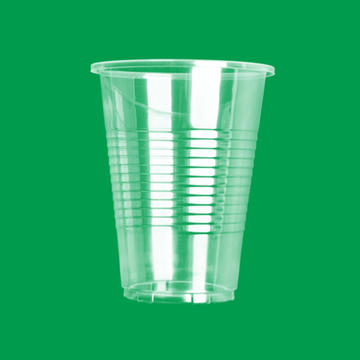I. Molding Characteristics of PP Tableware
PP tableware, made primarily from polypropylene (PP), boasts excellent thermoplasticity, chemical stability, and food safety, making it a mainstream material in the disposable tableware industry. PP has a high degree of crystallinity and a strong molecular chain regularity. However, during the injection molding or thermoforming process, warping and blister defects can occur due to uneven cooling shrinkage, residual internal stress, and gas entrapment. These two issues directly impact the appearance quality, structural strength, and safety of PP tableware. Therefore, controlling the stability of the molding process is a key technical aspect in production.
II. Causes of Warpage
Warping is one of the most common appearance defects in PP tableware production, manifesting as an upturned edge, uneven bottom, or localized distortion.
The main factors contributing to warpage include the following:
Uneven Cooling Rate: Polypropylene undergoes volumetric contraction during the cooling phase. Different cooling rates in different areas can lead to uneven internal stress distribution, resulting in warping.
Mold Temperature Difference: Excessively high mold temperatures or a large temperature difference between the two sides can cause one side of the product to solidify first and the other side to solidify later, resulting in stress imbalance. Improper injection pressure and holding time: Low injection pressure or insufficient holding time can lead to uneven product density and differential shrinkage.
Uneven product thickness: PP tableware designs with large differences between thick and thin-walled areas can lead to different cooling shrinkage rates, resulting in warping and warping.
Mold release stress: Uneven ejection or poor mold venting can easily lead to localized internal stress concentrations on the part surface, causing deformation.
III. Warpage Control Measures
Optimize mold temperature control: Maintain a balanced mold temperature. The cooling system should cover all key areas of the part to avoid excessive temperature gradients. Conventional PP tableware mold temperatures within the 40°C to 60°C range provide good dimensional stability.
Adjust injection and holding pressure parameters: Appropriately increase the holding pressure and extend the holding time to ensure adequate melt filling and reduce differential shrinkage. Generally, the injection pressure is set between 70 and 100 MPa, and the holding time is determined based on the part thickness.
Improve product structural design: Maintain uniform wall thickness, reduce sharp transition areas, and add rib support structures where necessary to reduce the risk of concentrated shrinkage.
Enhance the precision of the demolding system: The ejector mechanism should be balanced and symmetrical to prevent stress concentration in the product caused by single-point ejection.
Properly control the cooling cycle: Ensure that the product is fully formed before demolding. Too short a cooling time can cause warping, while too long a cooling time can reduce production efficiency.
IV. Cause Analysis of Bubble Problems
Bubble formation is another common defect in the PP tableware molding process. It manifests as cavities, bubbles, and pitting inside or on the surface of the product, affecting transparency and mechanical properties. The main causes of bubble formation include:
Excessive raw material moisture content: Although polypropylene has low hygroscopicity, it may absorb a small amount of moisture during storage and transportation, forming water vapor bubbles upon heating.
Excessive injection speed: The melt flow violently stirs the air, causing gas to be drawn into the mold cavity.
Inadequate exhaust system design: Improperly positioned or blocked mold vents can trap air in the center of the product, forming bubbles.
Excessive melt temperature: Excessive melt temperature causes polypropylene to decompose, producing low-molecular-weight volatiles, which in turn form tiny bubbles.
Insufficient holding pressure or insufficient feeding: Failure to promptly feed the melt during cooling and shrinkage can result in shrinkage bubbles or voids.
V. Bubble Control Measures
Strictly dry the raw materials: PP pellets should be dried with hot air before molding, generally at 80°C to 100°C for 2 to 3 hours to ensure a moisture content below 0.05%.
Optimize injection speed and pressure: Maintain a steady injection rate to prevent air entrapment caused by excessive mold filling. A multi-stage injection method can be used, starting slowly and then accelerating, to ensure even melt distribution.
Improve the mold venting system: Designate appropriate venting grooves at the end of the cavity and in thin-walled areas, with a depth of 0.02-0.05mm to facilitate air evacuation.
Control the melt temperature: Maintain the barrel temperature between 190°C and 220°C to avoid excessive temperatures that could cause decomposition or gas release.
Extend the holding and cooling stages: Increase the holding time appropriately to prevent shrinkage voids from forming, while ensuring uniform cooling to reduce internal stress.

 English
English 中文简体
中文简体


















